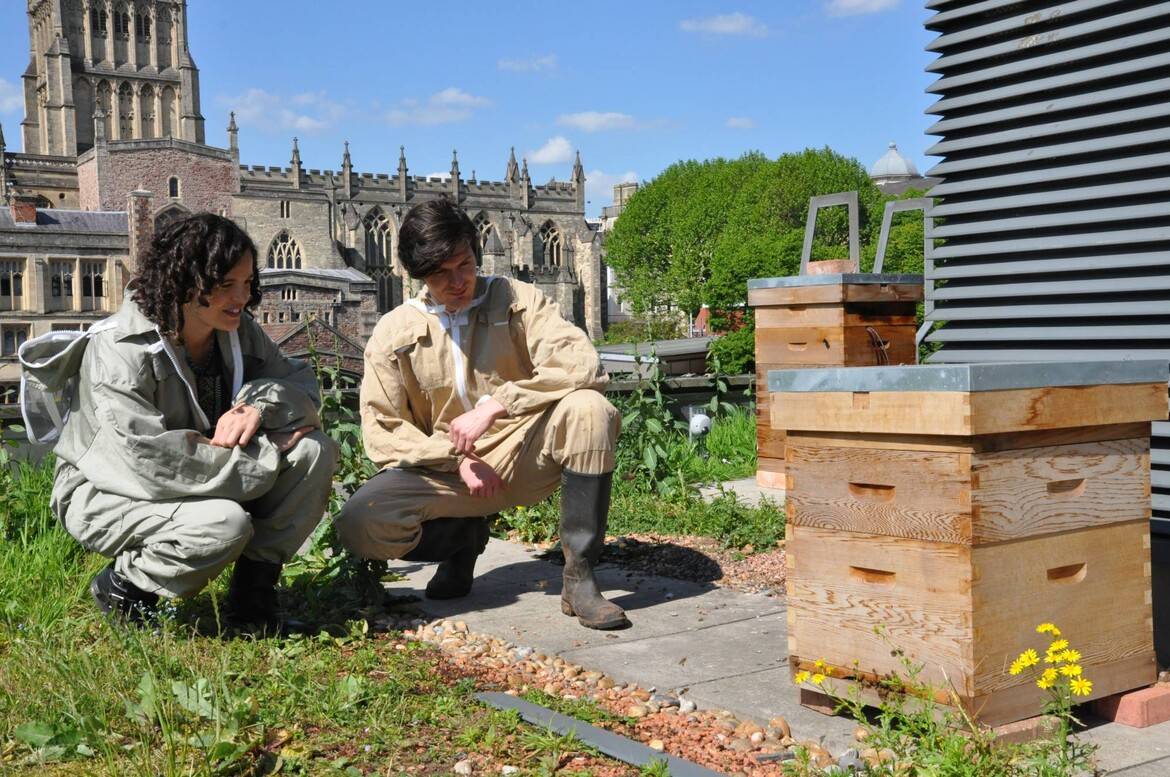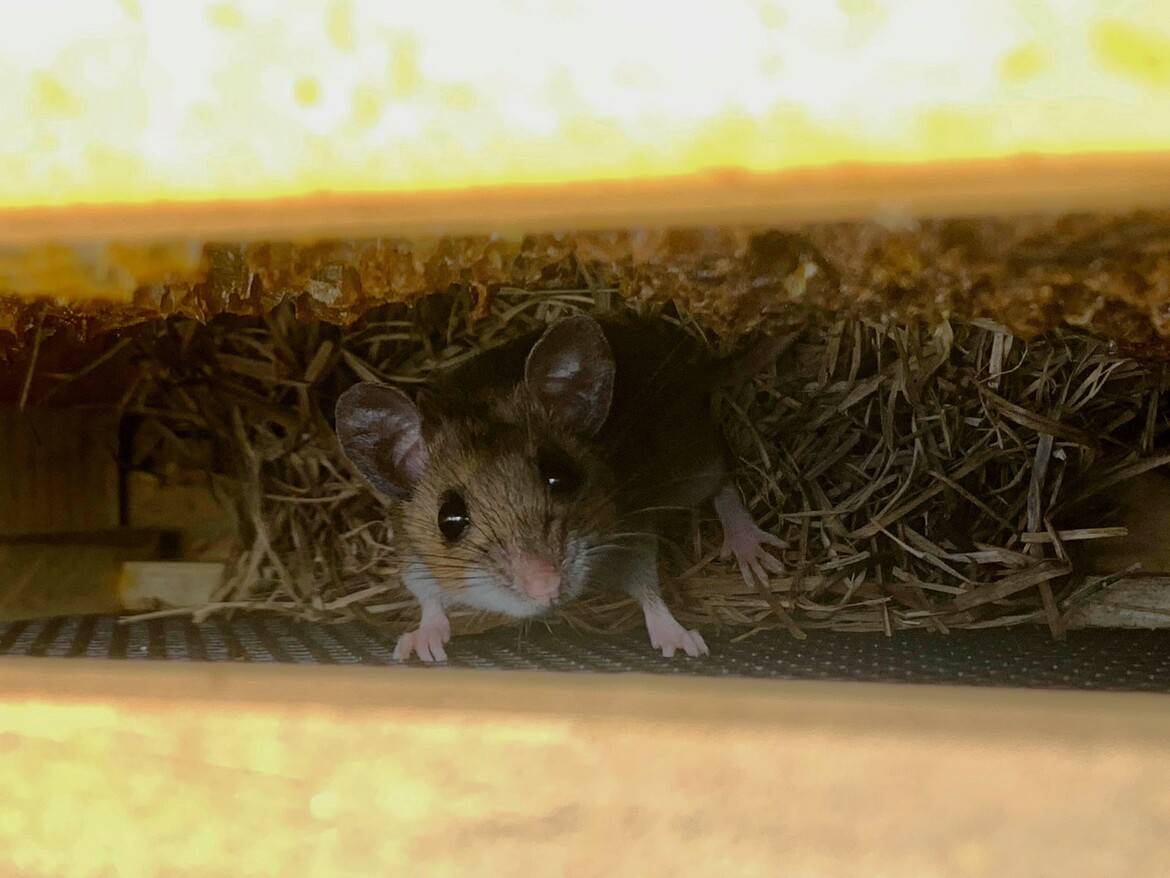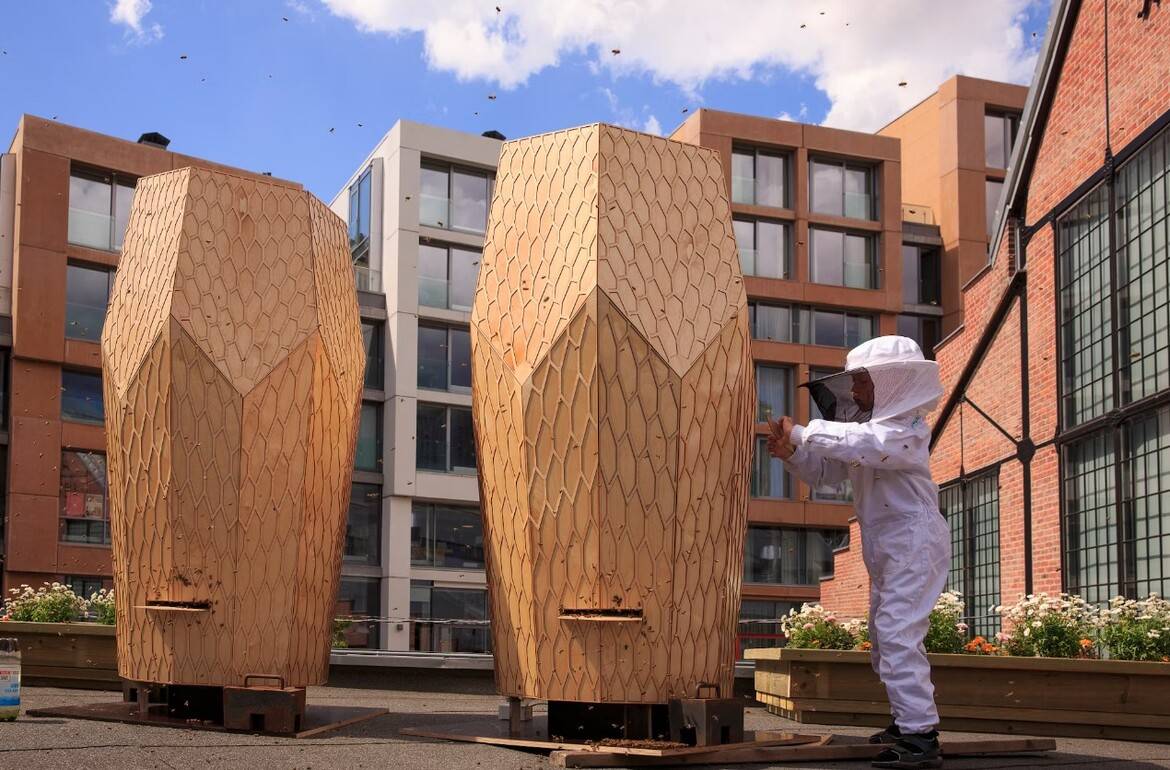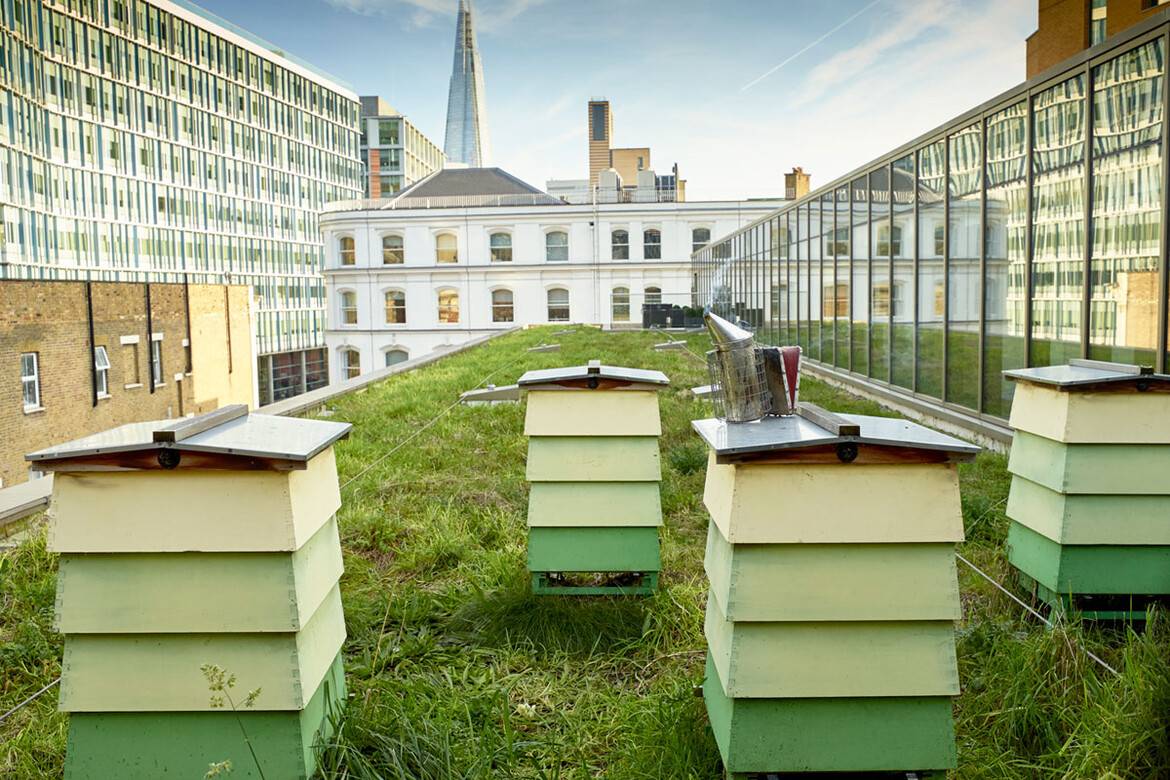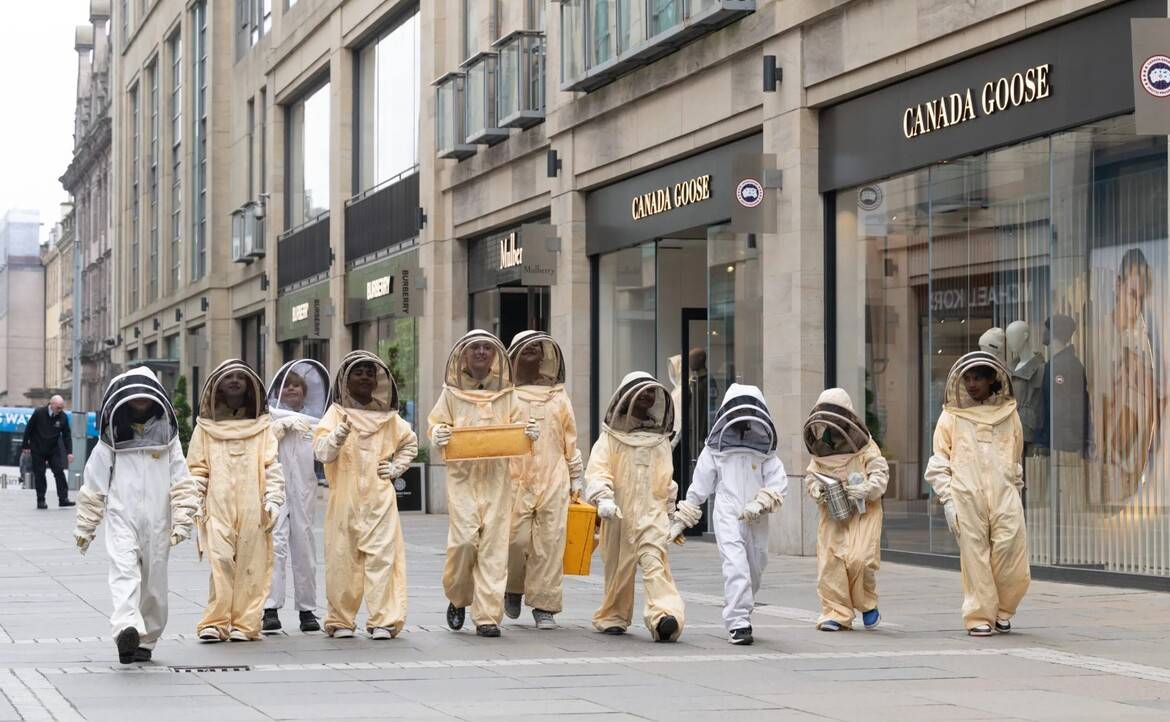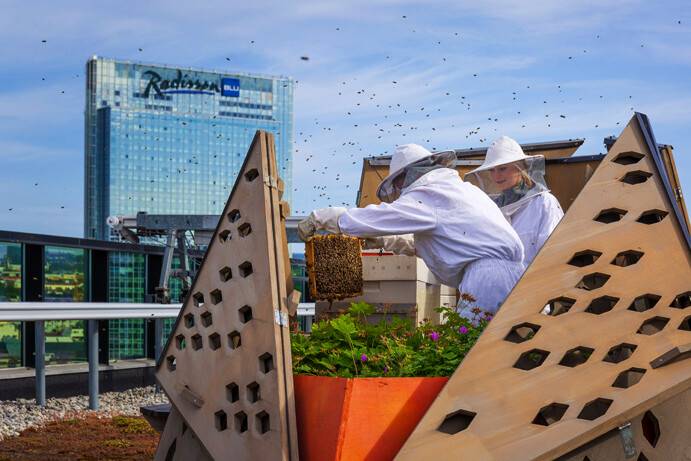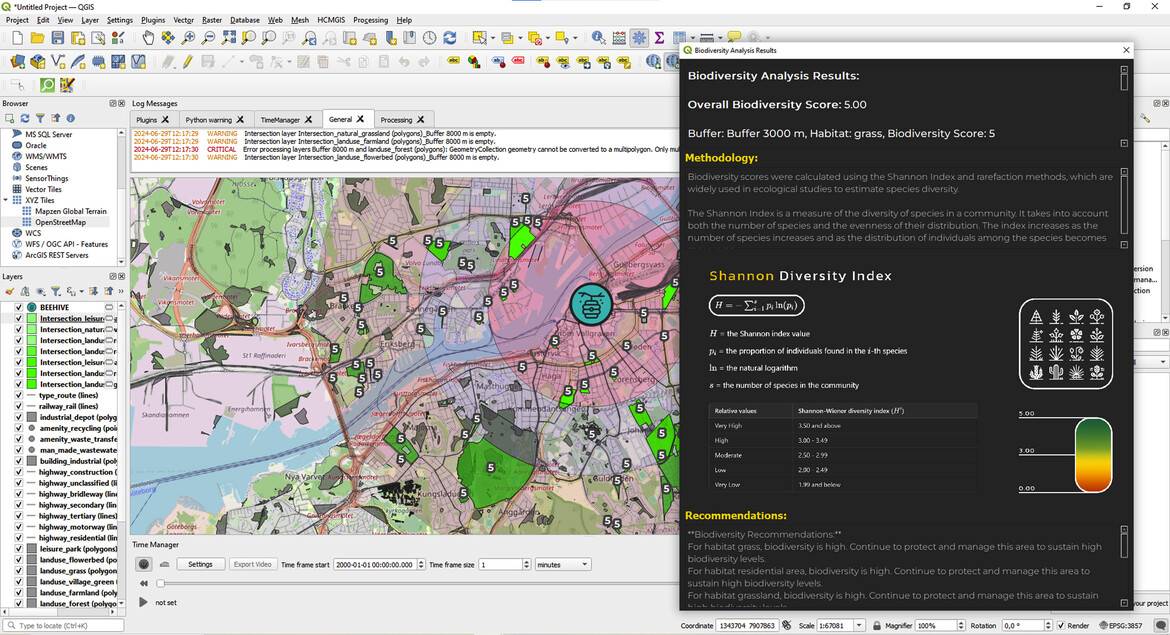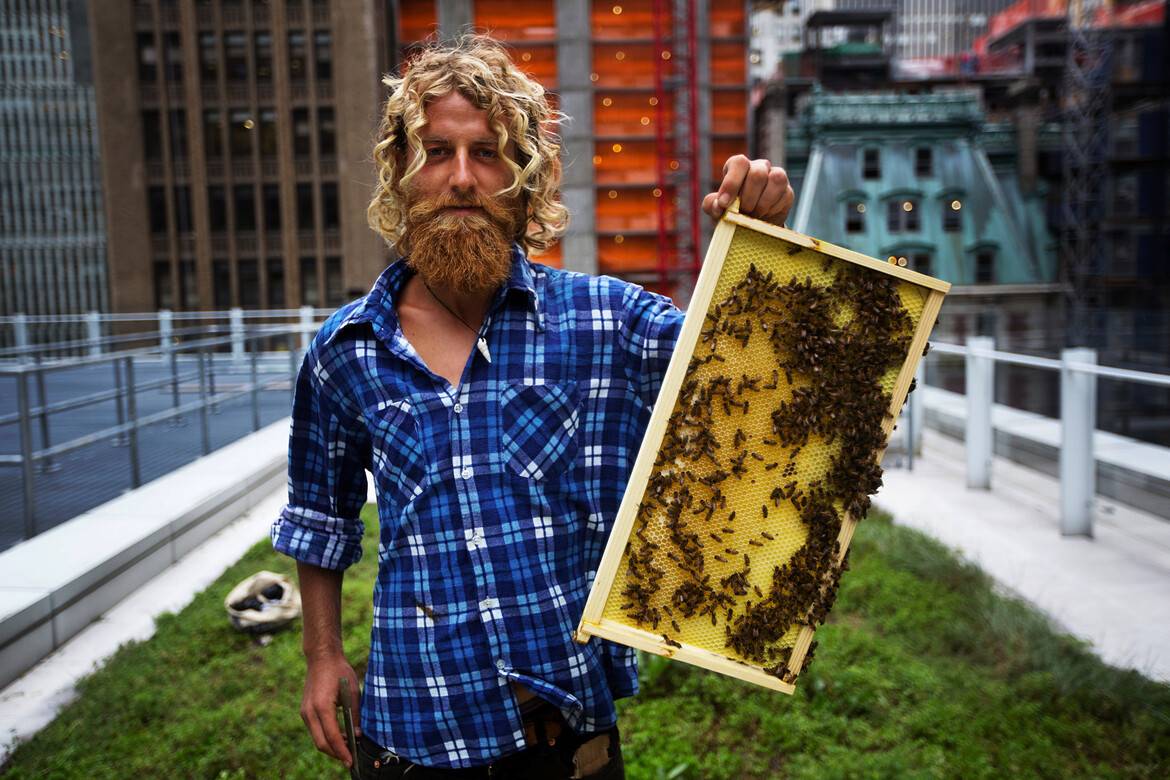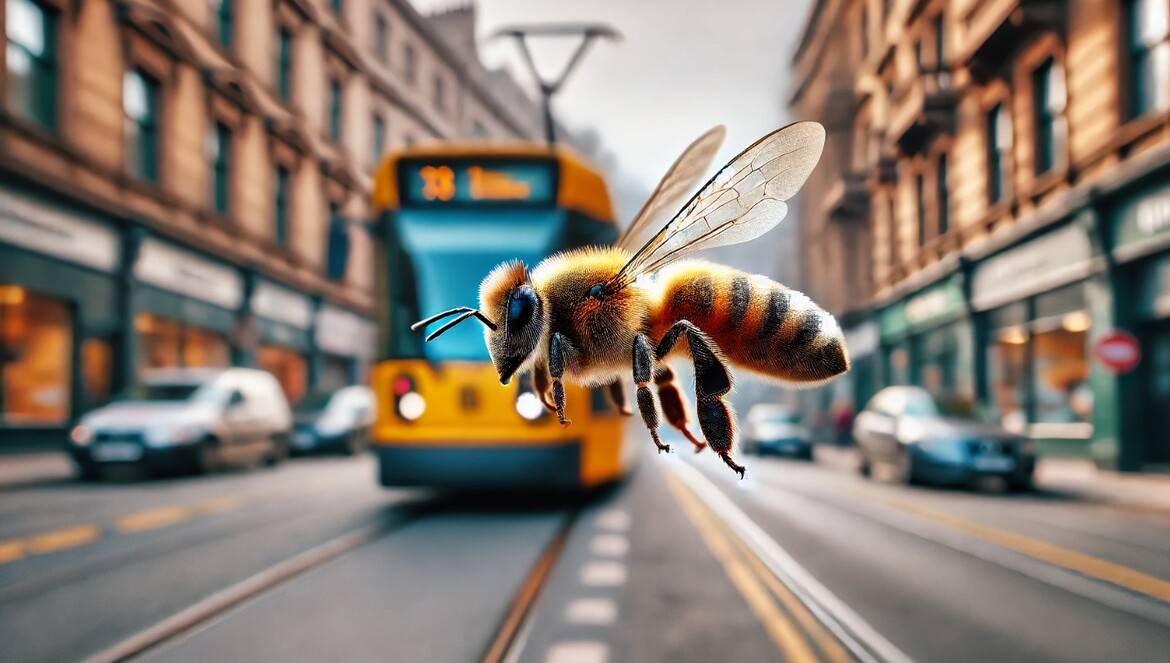Green roofs - a haven for pollinators to enrich urban biodiversit
In urban areas where space is increasingly limited, green roofs with beehives present an innovative solution to enhance biodiversity and sustainability. This approach not only supports urban pollinators but also transforms unused rooftop spaces into vibrant gardens and ecologically rich areas. However, despite their apparent perfection, careful consideration must be given to the safety and health of bees, as well as the proliferation of such practices.
Benefits of Rooftop Beehives
Beehives on rooftops play a crucial role in urban biodiversity. Bees are key pollinators that contribute to the pollination of about 100 crops that feed approximately 90% of the world’s population. In urban environments, they improve the health of city gardens, parks, and green spaces. Research indicates that bees thrive better in urban areas than in rural ones due to the diversity of flowers available throughout the year (Living Architecture Monitor, 2023). This nearly constant supply of pollen and nectar creates a stable environment for bees and other pollinators (Best Bees, 2023).
One advantage for bees is the reduced exposure to pests like various insects and mice, as well as larger predators like bears or foxes (Urban Beekeeping Guide, 2023). Roofs can offer better protection from floods and other extreme weather conditions that can damage ground-level hives. Rooftop hives are also less exposed to ground moisture, which helps prevent the growth of mold and other harmful microorganisms.
Architectural Integration
Integrating beehives into urban architecture offers unique opportunities for creative and functional design. For example, the internationally renowned architectural and design firm Snøhetta, based in Oslo, Norway, is known for its multidisciplinary approach that includes architecture, landscape architecture, interior design, and graphic design. They developed and designed their own type of beehives named Vulkan, which transform unused rooftop space into productive ecological areas, contributing to sustainability and the aesthetic value of buildings through thoughtful design.
Location and Safety
When choosing a rooftop for hives, several factors must be considered to ensure the safety and health of bees and people. Roofs that receive plenty of morning sun allow bees to become active early, increasing their efficiency in gathering nectar and pollen (BeeKeepClub, 2023). It is also important to ensure that the hive is accessible for maintenance while being positioned to minimize interactions between people and bees (Urban Bee Life, 2023).
Educational Aspect
Urban beekeeping also offers numerous educational opportunities. Schools and various organizations can incorporate beekeeping into their environmental education programs, promoting a deeper understanding of the importance of bees (Urban Farm Tips, 2023). With an increasing portion of the population living in urban areas, it supports local beekeepers and apiaries, strengthening the local micro-economy and promoting sustainable practices within the community, as well as inspiring young people to take up beekeeping.
Environmental Impact and Sustainability
Urban farming and consequently beekeeping practices contribute to reducing the urban heat island effect by retaining moisture and preventing rapid heating of surfaces. Expanding greenery also improves air quality and filtration (Urban Farm Tips, 2023).
Bees from Roofs Instead of Air Quality Sensors in Cities
Urban environments can also be harmful to bees and people due to pollution and various particulates in the air. Some scientists and companies have started researching how bees and their pollen can be used as indicators of air quality in urban areas. A single bee can visit up to 5,000 different flowers in a day within a typical radius of 3 km around the hive. This covers a large area and collects samples of heavy metals and other particulates. For my master’s project at Jönköping University in Sweden, I developed an algorithm that, based on the plants, identifies where bees have collected pollen and nectar and determines the pollution levels of certain neighborhoods in cities based on the samples in the pollen.
Best practices
Cities like New York, London, and San Francisco have successfully embraced rooftop urban beekeeping. The removal of the beekeeping ban in New York in 2010 led to a surge in urban hives, with many corporate buildings and residential complexes installing hives on their rooftops (Living Architecture Monitor, 2023). This trend has been followed by other capitals and cities on different continents.
Concerns
Despite listing numerous advantages and reasons for urban rooftop beekeeping, there are also strong arguments against it. Due to the increasing occurrence of "Green Washing" or the misuse of environmental awareness for profit and reputation, some companies nowadays engage in "Bee Washing." Because it is easier to buy a few beehives and place them on a roof than to change their operational methods, bees have proliferated in some cities and areas, displacing local species of wild pollinators like bumblebees and wild bees, which then starve and go extinct due to a lack of forage. A major concern in urban beekeeping is also the quality of the produced honey and whether it is properly analyzed before being sold.
References/Sources:
Living Architecture Monitor. (2023). "The Rooftop Beekeeping Buzz: Why Buildings Are Using Bees To Go Greener."
Best Bees. (2023). "Urban Beekeeping Problems and Benefits."
Urban Bee Life. (2023). "The Ultimate Guide to Setting Up Your First Urban Beehive."
BeeKeepClub. BeeKeepClub. (2023). An Introduction to Urban Rooftop Beekeeping.
